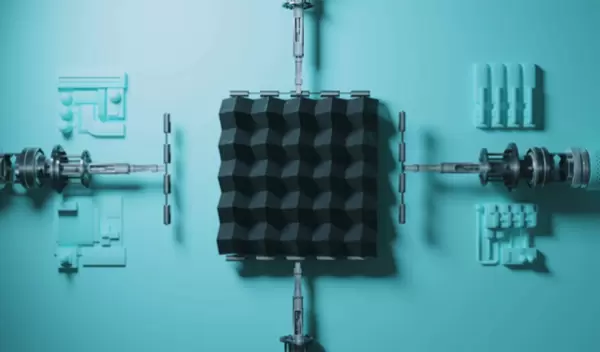
Engineers draw inspiration from geometrical frustration
Springs, squeegees and soda straws function with a common property — they are rigid in one direction and flexible in another. Structures like these, with properties that vary across dimensions, have played critical roles in human technology from the longbow to the booster rocket.
Now, U.S. National Science Foundation-supported researchers have drawn inspiration from the art of origami to create programmable surfaces that allow engineers to alter the physical properties of a uniform substance. "Using nature for inspiration, this research is making it possible to design and develop materials that are both structurally resilient and lightweight, needed for a range of applications in U.S. industry," said Wendy Crone, a program director in NSF's Directorate for Engineering.
In a paper published in the journal Advanced Materials, the researchers described structures that are also programmable, so dimensions and corresponding properties can shift as needed. The researchers hope that designers will be able to apply the techniques to medical devices, architecture, robotics and aerospace.
To create the structures, they began with cells of four kite-shaped figures known as rhombuses; each rhombus is connected to two others along two sides, with a tail end of each rhombus-free. The connecting sides are hinged in some special ways, so each cell can click through a variety of forms, from a wide basket to thin folds. The researchers combined many of these cells to create a wide range of surfaces.
By adjusting cells, the engineers can change the properties of the entire surface. Among the options, they can vary compressibility, flexibility and density. Because individual cells are adjustable, the researchers can vary properties in the surface and can easily change and adjust the properties.
The technique takes advantage of a phenomenon that physicists call frustration. In geometry, frustration is a feature that stops a pattern from propagating across a wide space — like a jagged rock in a snowfield. With the adjustable cells, the engineers can introduce frustration into structures. They use this to change the properties of the surface over wide areas and small spots.
The researchers can use these engineered frustrations to precisely change the patterns of the surface. By changing the patterns, they can adjust the surface's properties.
"We have an almost infinite number of adjustments, which provide a rich design space," said Glaucio Paulino of Princeton University, one of the principal researchers. Paulino worked with colleagues from the Indian Institute of Technology Madras, Peking University, the University of Tokyo and the University of Trento on the project.


